NOCTUIDAE - Spodoptera exigua (Hübner) *Non-Rep*
Taxonomy
Noctuoidea: Noctuidae: Noctuinae: Spodoptera exigua (Hübner)
Common names: beet armyworm, small mottled willow
Synonyms: Caradrina venosa, Laphygma exigua
Larval diagnosis (Summary)
- Characteristic body coloration (see Figs. 1-7 and Detailed Information)
- Lateral black spot near the SD1 seta on the mesothorax
- Minute sclerotized bar connecting the SD1 setal base to a tonofibrillary platelet on the meso- and metathorax
- Cuticle texture is smooth (at 20X)
Host/origin information
Spodoptera exigua is frequently intercepted from various countries throughout the world, although Mexico is the most common origin, accounting for 75% of the
total number of interceptions. Larvae are polyphagous, and approximately 250 hosts are listed in PestID. The most common origin/host combinations are listed here:
| Origin |
Host(s) |
| Dominican Republic | Capsicum |
| Hawaii | Ocimum |
| Israel | Asclepias, Gerbera |
| Mexico | Apium, Aster, Brassica, Capsicum, Dianthus, Gladiolus, Helianthus,
Mentha, Ocimum, Origanum, Portulaca, Thymus |
| Netherlands | Asclepias |
| Thailand | Dendrobium, Oncidium |
Recorded distribution
A native of Asia, Spodoptera exigua has spread worldwide. It is currently found on every continent except Antarctica, although it do not overwinter in far northern
regions and it is rare or absent in parts of South America (Pogue 2002).
Identification authority (Summary)
Being highly polyphagous and cosmopolitan, host/origin data does not help identify S. exigua most of the time. Larvae are not expected to be
associated with dead plant material or woody conifers. Otherwise, most countries and green plants are potential pathways.
Pest characterization
(Based on Cavey 2001, Pogue 2002)
- Taxonomy: High. Species identification is often possible.
- Distribution: Low. Spodoptera exigua is present in the U.S.
- Potential Impact: High. Spodoptera exigua is a pest species.
This ranking characterizes S. exigua as not quarantine significant for the U.S.
NOCTUIDAE - Spodoptera exigua (Hübner) *Non-Rep*
Larval diagnosis (Detailed)
The larva of the beet armyworm, Spodoptera exigua, was partially described by Crumb (1956: 224), Okumura (1961), Peterson (1962), Pogue (2002),
and Beck (1999-2000). The mouthparts were illustrated by Ahola and Silvonen (2005: 510). Dong et al. (1980) photographed the head and
thorax of the first instar.
Typical New World interceptions of S. exigua are immediately recognized by the characteristic coloration, lateral black spot near the
SD1 seta on the mesothorax and a minute sclerotized bar connecting the SD1 setal base to an adjacent ventral muscle attachment (tonofibrillary platelet)
on the meso- and metathorax (Weisman 1974, 1986; Passoa 1991). The cuticle texture is smooth (at 20X).
There are two main color forms. The first one has a darkly marked dorsum with either dashes or rectangular bars, but never with a series of
triangular markings (Levy and Habeck 1976, Passoa 1991, Beck 1999-2000: B668, Wagner et al. 2011). The second, more common form, varies from
light to dark olive green and is marked with a mixture of spots and dashes on the dorsum (Passoa 1991, Wagner et al. 2011). There is often a
large contrast between the pale dorsum and darker subdorsal area (Weisman 1986, Beck 1999-2000: B668).
Several issues complicated identification of S. exigua in the New World. Larvae resembling S. exigua, but without the mesothoracic black spot,
are sometimes intercepted. It is unclear if these are S. exigua or not. In other cases, specimens are seen with long pointed spinnerets; these
cannot be S. exigua. Both of these situations are best identified as "sp. of Noctuidae".
Spodoptera praefica has a rectangular, somewhat obscure, black spot on the mesothorax. This is a western United States species with coloration
totally unlike S. exigua (see Pogue 2002:185). Some green forms of S. frugiperda resemble S. exigua if the pinacula are very pale (Passoa 1991).
Crumb (1956) separated these two species, in part, by the position of a line connecting the P1 setae. The line is above the apex if the front in S. frugiperda
but below the apex in S. exigua (see illustrations in Okumura 1961).
More serious is the fact that S. exigua is easily confused with early instars of Copitarsia decolora and possibly other species of Copitarsia
as well. The fastest way to seperate these two taxa is by counting the number of thoracic SD sclerotized bars. Spodoptera exigua has only one bar
near SD1 whereas Copitarsia has two bars, one on SD1 and one on SD2 (Weisman 1986). In addition, the spinneret and labial palpi are different
(see data sheet on Copitarsia for details).
Weisman (1974) grouped S. exigua with two other Old World relatives, S. exempta and S. mauritia, because all three species have a mesothoracic
spot near SD1, no spot on A1 and muscle attachments between the prolegs on A3-6 that form a "Y". The mesothoracic spot on S. exempta appears to be
absent or obscure at least in some color forms (SPIC). Spodoptera mauritia does have a small light brown mesothoracic marking near SD1 (Beardsley 1982).
Fortunately, these three species have completely different color patterns and should not be confused with each other. However, it shows that one cannot
focus just on a mesothoracic spot to identify S. exigua from the Old World.
Identification authority (Detailed)
Being highly polyphagous and cosmopolitan, host/origin data usually does not help identify S. exigua. Larvae are not expected to be
associated with dead plant material or woody conifers. Most countries and green plants are potential pathways, although in South America it is only
reported from Bolivia, Brazil, Peru, and Chile (Zheng et al. 2011).
Specimens preserved in alcohol sometimes lose their color and are very pale. If a lateral mesothoracic spot is discernible, a few backup
characters will help confirm S. exigua. These include presence of a minute sclerotized bar connecting the SD1 setal base to a ventral muscle
attachment on the meso- and metathorax, a bisetose SV group on A1, a smooth cuticle (at 20X) and the muscle attachments between the prolegs
on A3-6 forming a short stemmed Y (Passoa 1991). The mandible has no inner teeth or retinaculum. However, none of the morphological characters
that define S. exigua are very distinctive, and all expected to occur in other noctuid larvae, so specimens with atypical coloration from
hosts other than economically important plants need to be examined very carefully. For example, Crumb (1956: couplets 1, 6) listed a few "Amphipyrinae group 7"
and "Hadeninae with an open apical silk pore [of the spinneret]" as two taxa with a sclerotized bar on SD1 of the mesothorax. Early instars of S. exigua
often show the black mesothoracic spot. If other characters fit, these can be identified to species.
NOCTUIDAE - Spodoptera exigua (Hübner) *Non-Rep*
Origin records
Spodoptera exigua has been intercepted from the following locations:
Argentina, Brazil, Canada, Chile, China, Colombia, Costa Rica, Dominica, Dominican Republic, Ecuador, Egypt, El Salvador, France,
Guadeloupe, Guatemala, Haiti, Hawaii, Honduras, India, Israel, Italy, Jamaica, Japan, Kenya, Lebanon, Malaysia, Mexico,
Micronesia, Netherlands, Nigeria, Palestinian Territory, Peru, Saudi Arabia, Singapore, South Korea, Spain, St. Lucia,
St. Vincent and the Grenadines, Tanzania, Thailand, Trinidad and Tobago, Turkey
Host records
Spodoptera exigua has been intercepted on the following hosts:
Achillea sp., Aconitum sp., Agapanthus sp., Alchemilla sp., Allium ascalonicum, Allium cepa, Allium fistulosum, Allium porrum,
Allium sativum, Allium schoenoprasum, Allium sp., Allium tuberosum, Alocasia sp., Alstroemeria aurantiaca, Alstroemeria sp.,
Amaranthus caudatus, Amaranthus hybridus, Amaranthus sp., Amaranthus spinosus, Ammi majus, Ananas comosus, Anemone sp., Anethum graveolens,
Anethum sp., Anigozanthus sp., Antirrhinum majus, Antirrhinum sp., Apiaceae, Apium graveolens, Apium graveolens var. dulce, Apium sp.,
Aranthera sp., Artemisia dracunculus, Artemisia sp., Artemisia tridentata, Asclepias sp., Asclepias tuberosa, Asparagus officinalis,
Asparagus sp., Asparagus sprengeri, Aster ericoides, Aster sp., Asteraceae, Astilbe sp., Bacopa sp.,
Basella sp., Bergera koenigii, Beta vulgaris var. cicla, Beta vulgaris var. vulgaris, Brassica campestris, Brassica chinensis,
Brassica juncea, Brassica napus, Brassica oleracea, Brassica oleracea var. acephala, Brassica oleracea var. alboglabra,
Brassica oleracea var. botrytis, Brassica oleracea var. capitata, Brassica oleracea var. italica, Brassica pekinensis, Brassica rapa,
Brassica rapa ssp. chinensis, Brassica rapa ssp. pekinensis, Brassica rapa var. parachinensis, Brassica sp., Bupleurum sp.,
Calendula officinalis, Calendula sp., Callistephus chinensis, Callistephus sp., Capsicum annuum, Capsicum sp., Carthamus sp.,
Carthamus tinctorius, Celosia argentea, Celosia sp., Chamaemelum sp., Chenopodium album, Chenopodium berlandieri ssp nuttalliae,
Chenopodium berlandieri ssp. nuttalliae, Chenopodium sp., Chlorophytum sp., Chrysanthemum sp., Cicer arietinum, Cichorium endivia,
Cinnamomum verum, Citrus sp., Clematis sp., Codiaeum variegatum, Colocasia esculenta, Coriandrum sativum, Cucurbita maxima,
Cucurbita sp., Cyathea sp., Cynara scolymus, Dahlia sp., Daucus sp., Davallia sp., Delphinium sp., Dendrobium sp., Dianthus barbatus,
Dianthus caryophyllus, Dianthus sp., Dysphania ambrosioides, Echeveria sp., Echinodorus sp., Eremurus sp., Ericaceae, Eruca sativa,
Eruca sp., Eryngium sp., Eucalyptus sp., Euphorbia sp., Eustoma grandiflorum, Eustoma sp., Fragaria ananassa, Fragaria sp.,
Genista sp., Gerbera sp., Gladiolus sp., Grevillea sp., Gymnocoronis spilanthoides, Gypsophila elegans, Gypsophila sp., Helianthus annuus,
Helianthus sp., Helichrysum sp., Heliconia psittacorum, Heliconia sp., Hydrangea sp., Ipomoea batatas, Iris sp., Lactuca sativa,
Lactuca sativa var. capitata, Lactuca sativa var. longifolia, Lactuca sp., Lilium sp., Limonium perezii, Limonium sinuatum,
Limonium sp., Lippia sp., Lisianthus sp., Luffa acutangula, Luffa sp., Lycopersicon esculentum, Malvaceae, Matthiola incana,
Matthiola sp., Mentha arvensis, Mentha longifolia, Mentha officinalis, Mentha piperita, Mentha sp., Mokara sp., Moluccella laevis,
Moluccella sp., Momordica balsamina, Momordica charantia, Momordica sp., Musa sp., Nephelium lappaceum, Nephelium sp.,
Ocimum basilicum, Ocimum sp., Oncidium basilicum, Oncidium sp., Opuntia sp., Orchidaceae, Origanum majorana,
Origanum sp., Origanum vulgare, Peperomia sp., Perilla sp., Petroselinum crispum, Petroselinum sp., Phaseolus sp., Phaseolus vulgaris,
Philodendron sp., Phlox sp., Physalis philadelphica, Physalis pubescens, Physalis sp., Pisum sativum, Pisum sativum var. macrocarpon,
Pisum sp., Pithecellobium dulce, Polianthes sp., Polianthes tuberosa, Porophyllum tagetoides, Portulaca oleracea,
Portulaca sp., Psidium sp., Ranunculus sp., Raphanus sativus, Rosa sp., Rosmarinus officinalis, Rubus sp., Rumex acetosa, Ruscus sp.,
Saccharum officinarum, Salvia officinalis, Salvia sp., Sechium edule, Solanum lycopersicum var lycopersicum,
Solanum sp., Solidago sp., Solidaster sp., Spinacia oleracea, Spinacia sp., Suaeda sp., Symphoricarpos sp., Tagetes erecta,
Tagetes sp., Thymus caespititius, Thymus citriodorus, Thymus sp., Thymus vulgaris, Trachelium sp., Tulipa sp.,
Vaccinium angustifolium, Vaccinium corymbosum, Vaccinium sp., Veronica sp., Viburnum sp., Vigna sesquipedalis, Vigna sp., Vigna unguiculata,
Xanthosoma hastifolium, Zea mays, Zingiber officinale
NOCTUIDAE - Spodoptera exigua (Hübner) *Non-Rep*
Setal map
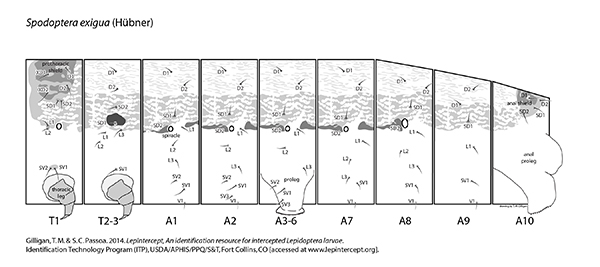 Spodoptera exigua setal map Spodoptera exigua setal map
<< Previous fact sheet Next fact sheet >>
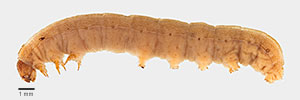 Fig. 1: Late instar, lateral view
Fig. 1: Late instar, lateral view |
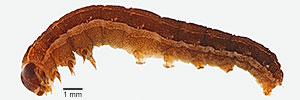 Fig. 2: Late instar, lateral view
Fig. 2: Late instar, lateral view |
 Fig. 3: Late instar, lateral view
Fig. 3: Late instar, lateral view |
 Fig. 4: Late instar, lateral view
Fig. 4: Late instar, lateral view |
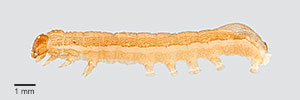 Fig. 5: Mid-instar, lateral view
Fig. 5: Mid-instar, lateral view |
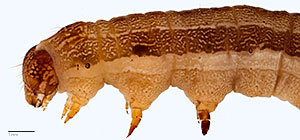 Fig. 6: Late instar, thorax (note lateral black spot on mesothorax)
Fig. 6: Late instar, thorax |
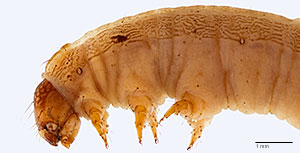 Fig. 7: Late instar, thorax (note lateral black spot on mesothorax)
Fig. 7: Late instar, thorax |
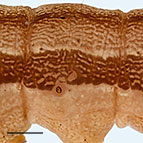 Fig. 8: Abdominal segment A4, note smooth cuticle
Fig. 8: Abdomen |
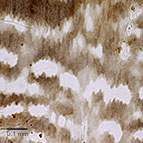
Fig. 9: Smooth cuticle |
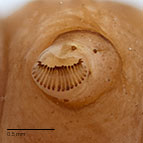
Fig. 10: Crochets |
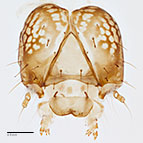
Fig. 11: Head |
 Fig. 12: Hypopharyngeal complex, lateral view
Fig. 12: Hypo. complex |
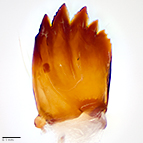
Fig. 13: Mandible |
|
|
|
|
|